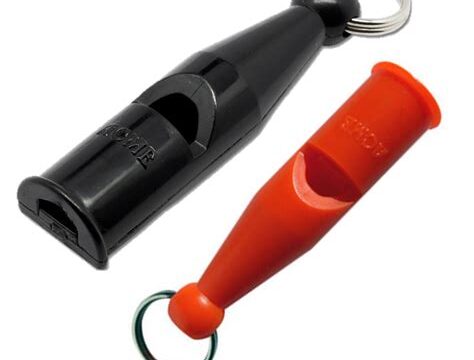Learn how to choose, use, and troubleshoot a dog training whistle for effective recall training and better communication with your furry friend.
Understanding the Dog Training Whistle
When it comes to dog training, the use of a dog training whistle can be a valuable tool. This simple device emits a high-pitched sound that is easily heard by dogs, making it an effective way to communicate with your furry friend. Understanding how the whistle works and the benefits it can bring to your training sessions is crucial for successful implementation.
First and foremost, it’s important to understand that the sound of the whistle is more than just a noise to get your dog’s attention. Dogs have an innate ability to hear high-frequency sounds, making a whistle an ideal tool for training. The consistency and clarity of the sound make it a reliable method of communication, especially in outdoor environments where other sounds may be competing.
Furthermore, using a dog training whistle can provide an added layer of safety, particularly when teaching your dog recall commands. In emergency situations, such as when a dog has a tendency to wander off, a whistle can serve as a powerful tool to call them back to you, even from a distance. This can be especially useful for off-leash training sessions and can ultimately help to keep your dog safe.
Choosing the Right Dog Training Whistle
When it comes to choosing the right dog training whistle, there are a few factors to consider. First and foremost, you’ll want to think about the frequency of the whistle. Different whistles emit different frequencies, and it’s important to choose one that your dog will be able to hear clearly. Additionally, you’ll want to consider the material and durability of the whistle. Since training sessions can be rigorous, a durable whistle that can withstand wear and tear is essential. Finally, consider the size and ease of use of the whistle. You’ll want a whistle that is comfortable to hold and easy to use, especially during intense training sessions.
Another important factor to consider when choosing a dog training whistle is the sound of the whistle. Some whistles offer adjustable tones, allowing you to find the pitch that is most effective for your dog. It’s also important to consider the distance at which the whistle can be heard. If you plan to use the whistle for long distance recall training, you’ll want a whistle that can be heard from a significant distance. Additionally, think about the weather conditions in which you’ll be using the whistle. Certain whistles are designed to be effective in various weather conditions, such as wind or rain. Considering these factors will help you choose a whistle that is best suited for your specific training needs.
When choosing a dog training whistle, it’s important to do your research and consider the specific needs of your dog and your training goals. With the right whistle, you can enhance your training sessions and improve communication with your furry friend, ultimately leading to a stronger bond and better obedience.
Incorporating the Whistle into Training Sessions
When it comes to training your dog, using a dog training whistle can be a valuable tool for communication and reinforcement. Incorporating the whistle into your training sessions can help you establish clear signals and commands for your dog to understand and respond to.
One way to incorporate the whistle into training sessions is to start by introducing the sound of the whistle to your dog in a non-threatening and positive way. You can do this by associating the sound of the whistle with rewards and treats, creating a positive association for your dog.
Once your dog has had a chance to become familiar with the sound of the whistle, you can begin using it to reinforce commands and signals during training. For example, you can use the whistle to get your dog’s attention, to signal a change in behavior, or to recall your dog to your side.
Teaching Your Dog to Respond to the Whistle
Teaching your dog to respond to the whistle can be a very useful tool in dog training. The first step in this process is to get your dog familiar with the sound of the whistle. Start by blowing the whistle in a quiet environment and giving your dog a treat immediately after. This will help your dog associate the sound of the whistle with something positive. Repeat this process several times over the course of a few days to ensure that your dog makes the connection.
Once your dog is comfortable with the sound of the whistle, you can start using it to command your dog to come to you. To do this, blow the whistle and then immediately call your dog to you. When your dog comes to you, be sure to reward them with a treat or praise. It’s important to be consistent with this training, so be sure to practice this exercise several times a day.
As your dog becomes more familiar with the whistle, you can start incorporating it into other training sessions. For example, you can use the whistle to signal the start of an agility course or to call your dog to you during a game of fetch. The key is to always reward your dog for responding to the whistle, so that they continue to see the whistle as a positive cue.
Using the Whistle for Recall Training
Using the Whistle for Recall Training
Recall training is an essential aspect of teaching your dog to come back to you when called. Incorporating a dog training whistle into your recall training sessions can be a highly effective tool in reinforcing this behavior. The whistle is a distinct sound that can cut through distractions and can be heard over longer distances, making it ideal for recall training.
When using the whistle for recall training, it’s important to start by associating the sound of the whistle with positive experiences for your dog. This can be achieved by pairing the whistle with treats or rewards every time your dog returns to you upon hearing the whistle. Consistency is key in recall training, so it’s crucial to use the whistle every time you call your dog back to you, gradually reducing the reliance on treats as the behavior becomes more consistent.
Additionally, it’s important to practice recall training in different environments and gradually increase the level of distractions to ensure that your dog responds to the whistle regardless of the situation. This will help solidify the recall behavior and ensure that your dog reliably comes back to you when called, making the whistle an invaluable tool for recall training.
Troubleshooting Common Whistle Training Issues
When it comes to training your dog with a whistle, there can be various issues that arise during the process. One common issue is that the dog does not seem to respond to the whistle. This could be due to the pitch or frequency of the whistle not being suitable for the dog’s hearing. It is important to test out different whistles and find one that your dog can respond to effectively.
Another common problem that people encounter when using a dog training whistle is that their dog becomes confused or frightened by the sound. This can happen if the whistle is blown too loudly or too close to the dog’s ears. It is important to start with gentle, quiet blows and gradually increase the volume as your dog becomes more familiar with the sound. Remember, patience and positive reinforcement are key when using a whistle in training.
Sometimes, dog owners may find that their dog responds well to the whistle during training sessions, but fails to do so in real-life scenarios. This could be due to distractions or lack of motivation. In such cases, it is important to continue practicing in different environments and gradually increase the level of distractions while rewarding your dog for responding to the whistle. Consistency and perseverance are crucial in troubleshooting these common whistle training issues.
Benefits of Using a Dog Training Whistle
Using a dog training whistle can have several benefits for both you and your furry friend. The whistle provides a consistent sound that is easy for dogs to distinguish, making it an effective tool for training and communication.
One of the key benefits of using a dog training whistle is that it can reach long distances, allowing you to give commands to your dog from afar. This is particularly useful for recall training, as the sound of the whistle can cut through background noise and grab your dog’s attention, even when they are far away.
Additionally, using a whistle can be less harsh on your voice compared to shouting, and it provides a consistent and clear signal for your dog to follow, leading to more effective training sessions.
Frequently Asked Questions
What is a dog training whistle?
A dog training whistle is a tool used to train dogs by producing a high-pitched sound that can be heard over long distances. It is used to command dogs to stop, come, or stay.
How does a dog training whistle work?
A dog training whistle works by emitting a sound at a frequency that is beyond the range of human hearing, typically between 20,000 to 40,000 Hz. Dogs have a more acute sense of hearing and can hear these high-frequency sounds from a distance.
Can any dog be trained with a whistle?
Yes, any dog can be trained with a whistle, but it may take some time for the dog to learn and respond to the specific commands associated with the whistle. Consistent training and positive reinforcement are key to successful whistle training.
What are the benefits of using a dog training whistle?
The benefits of using a dog training whistle include being able to control and communicate with your dog at a distance, especially in outdoor or open spaces. It can also be more effective than verbal commands in certain situations.
Are there different types of dog training whistles?
Yes, there are different types of dog training whistles, including silent whistles, ultrasonic whistles, and adjustable frequency whistles. Each type has its own unique features and advantages.
How should I start training my dog with a whistle?
To start training your dog with a whistle, begin with short and frequent training sessions using simple commands like ‘come’ or ‘sit’. Pair the whistle command with a treat or reward to positively reinforce the behavior.
Are there any potential drawbacks to using a dog training whistle?
Some potential drawbacks to using a dog training whistle include the initial difficulty in teaching the dog to respond to the whistle, as well as the potential for overuse or misuse of the whistle, which can lead to the dog becoming desensitized to the sound.





